If you were to walk around the perimeter of Ulsoor Lake, one of Bengaluru’s most well-known lakes, you would spot a pair of wrought-iron gates, and beyond them, a palatial white house peeking through a cloud of colourful foliage. This double-storeyed heritage bungalow, with striking domes, canopies, and parapets, is set inside a sprawling garden. Upon entering these grounds, the city becomes a distant memory. The bungalow is Sri Aurobindo Bhavan, a branch of the Sri Aurobindo Society, a sylvan refuge amid Bengaluru’s urban chaos. The structure and the garden conjure up a space where time stands still.
I first discovered the Bhavan on Instagram, soon after moving to Bengaluru (formerly Bangalore) in early 2017 — and felt instantly compelled to learn more about the history of the city through its architectural heirlooms. I got the opportunity to finally visit it a year later and saw the bungalow bathed in warm January afternoon light — the pale, high-ceilinged, intricately panelled rooms and corridors were enveloped in silence, peace, and the fragrance of flowers and incense. Strolling through the garden afterwards, past old banyan trees and lily ponds, I instinctively knew it would be a place that I would keep returning to.
The Bhavan is the most recent incarnation of the bungalow, which was previously a private home and a residence for Nepalese royalty. In my quest to learn more about the building’s history, I spoke to Meera Iyer, researcher, author of the book Discovering Bengaluru and convenor of the Bengaluru Chapter of the Indian National Trust for Art and Cultural Heritage. “Its early history is a little hazy. It appears that the house was built in 1905 by Gangadhar Chetty, who was one of Bangalore Cantonment’s most prominent businessmen,” she says. Chetty belonged to the Chettiar community — traditionally, the Chettiars were merchants, accountants and moneylenders who worked with the British. The house then changed several hands before it was bought by Colonel Jai Prithvi Bahadur Singh, the Raja of Bajhang — a principality of Nepal — who was a writer, reformer and spiritual seeker, in 1921. He renamed it Jaya Bhavan and conducted his spiritual work — including weekly meetings of the ‘Humanistic Club’, which he founded — here. Even after his death in 1940, it continued to serve as a home to other members of the extended family, before being donated to the Sri Aurobindo Society by his wife in 1979. The space is now dedicated to activities that reiterate the teachings of the philosopher Sri Aurobindo and his disciple Mirra Alfassa, known to followers as The Mother.
This bungalow’s architecture reflects the era of its construction. Its external appearance, which features the Madras roofing technique and numerous kinds of unusual chhajjas (sunshades) above semi-circular windows, points towards vernacular influences. At the same time, elements like the classical columns and louvred shutters appear to be borrowed from colonial influences. Inside, the original terrazzo distinguishes the long central corridor that opens into rooms on either side, some of which are circular. The entire structure is crowned by embellished domes and dotted with octagonal ventilators. Meera explains that the structure that stands today is mostly unaltered, along with the rooms, which are also in their original form — only the porch is a relatively recent addition, constructed by Jai Prithvi Bahadur Singh after purchasing the property.
I especially gravitate towards the garden whenever I visit the Bhavan, always trying to imagine how its various inhabitants over the years would have engaged with it. While the garden is now filled with flowers named by The Mother, Meera tells me that there is an interesting and unique historical relic within it: “It is a small structure made of three pieces of granite stone, assembled to resemble a tall bench. This was something onto which you would unload luggage or loads from your horse. There are very few of these left in the city.”
The more I learn about the Bhavan’s many occupants and objects, the more I find there is to discover about it. It’s full of inspiration — so much so that I hope to one day have fiction that draws on the space or its various inhabitants. My story still eludes me, but I’m certain I will keep stopping by the Bhavan to unearth the many stories hidden behind its grand facade.
Find your way to the Sri Aurobindo Bhavan in Bengaluru via Google Maps here.
Our selection of stays across India, best visited for their design and style. Check in
Priyanka Sacheti is an independent writer based in Bengaluru. Raised in Oman and educated in the United Kingdom, she has written extensively about gender, art, environment and culture for various Indian and international publications. She is on Twitter at @priyankasacheti.
Emmanuel Augustine is an illustrator based in Kochi. He is on Instagram at @emmanuelagustine.
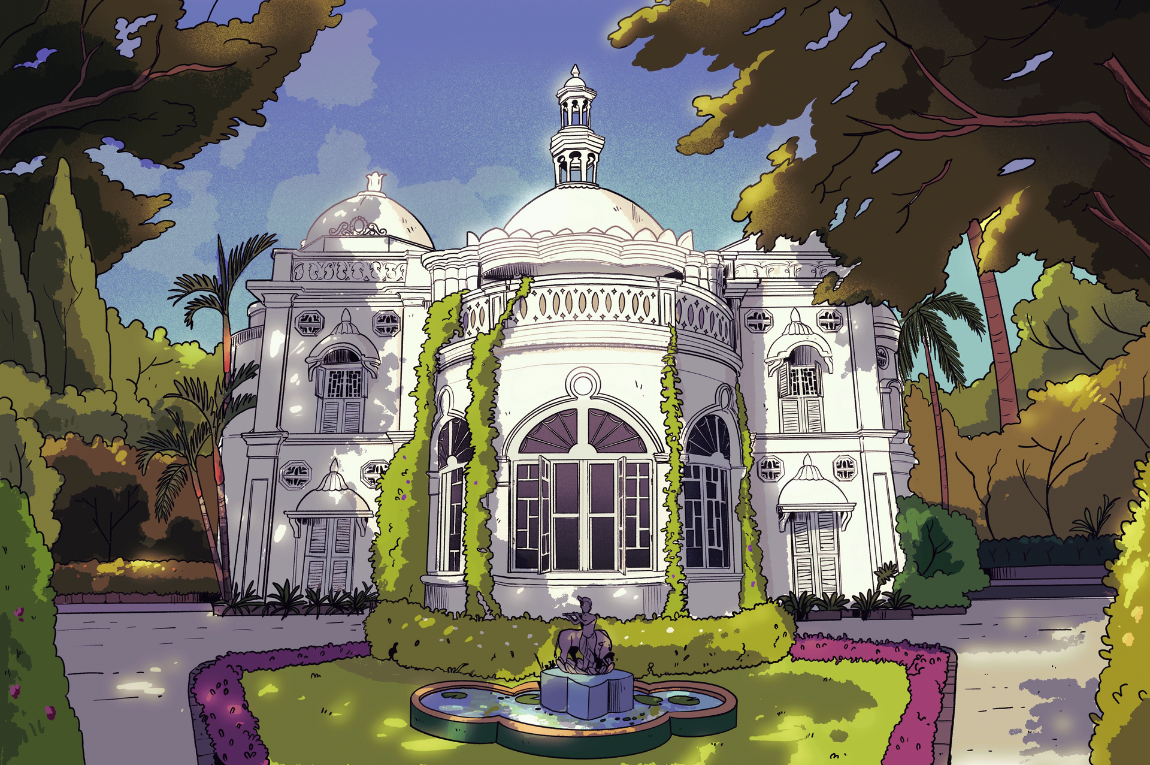
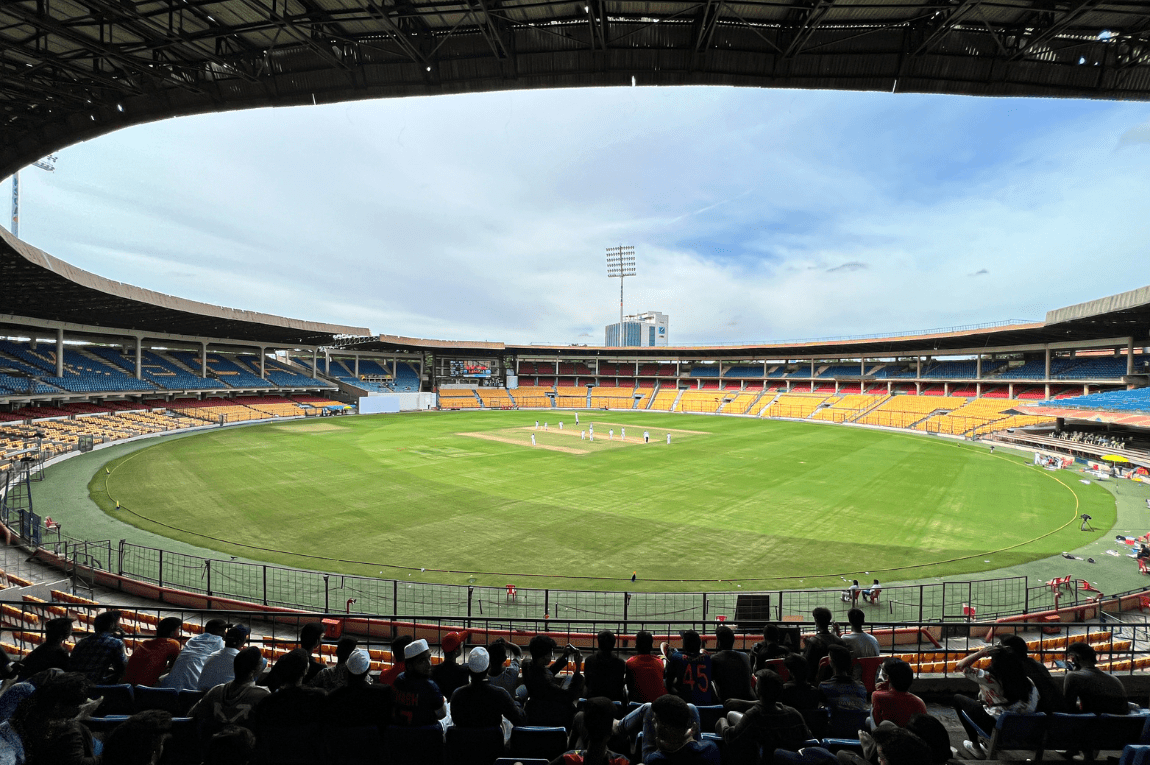

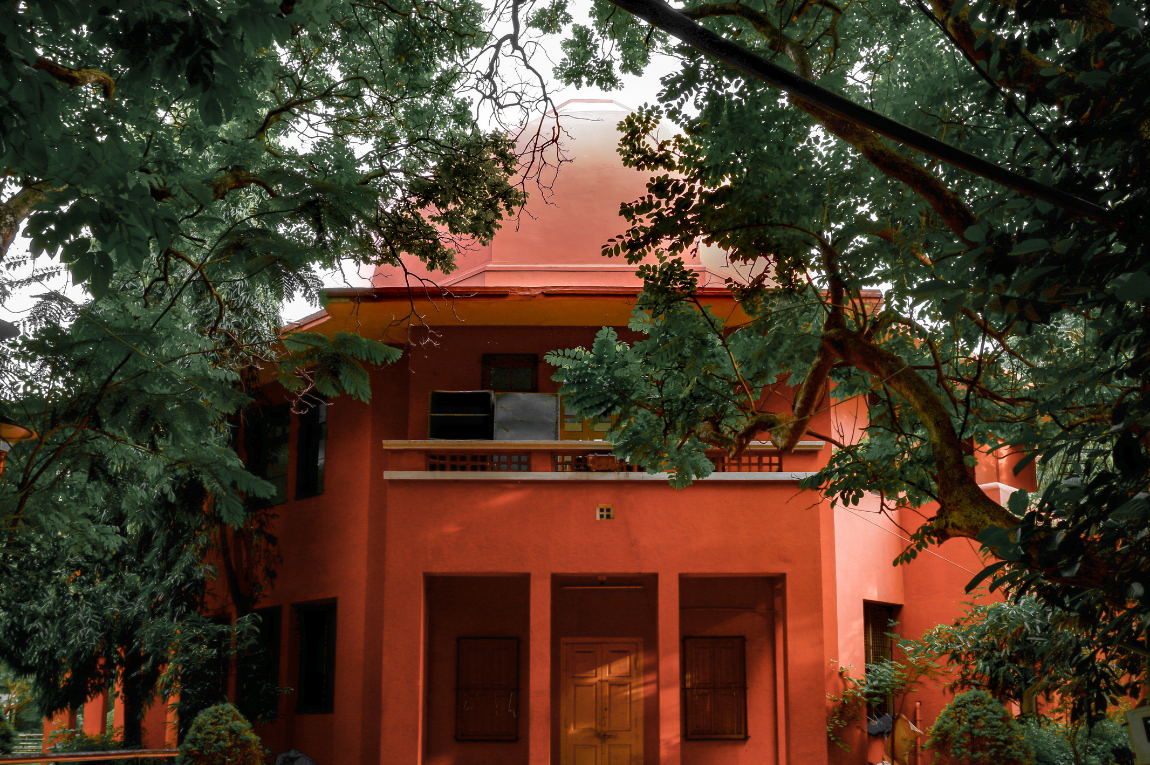
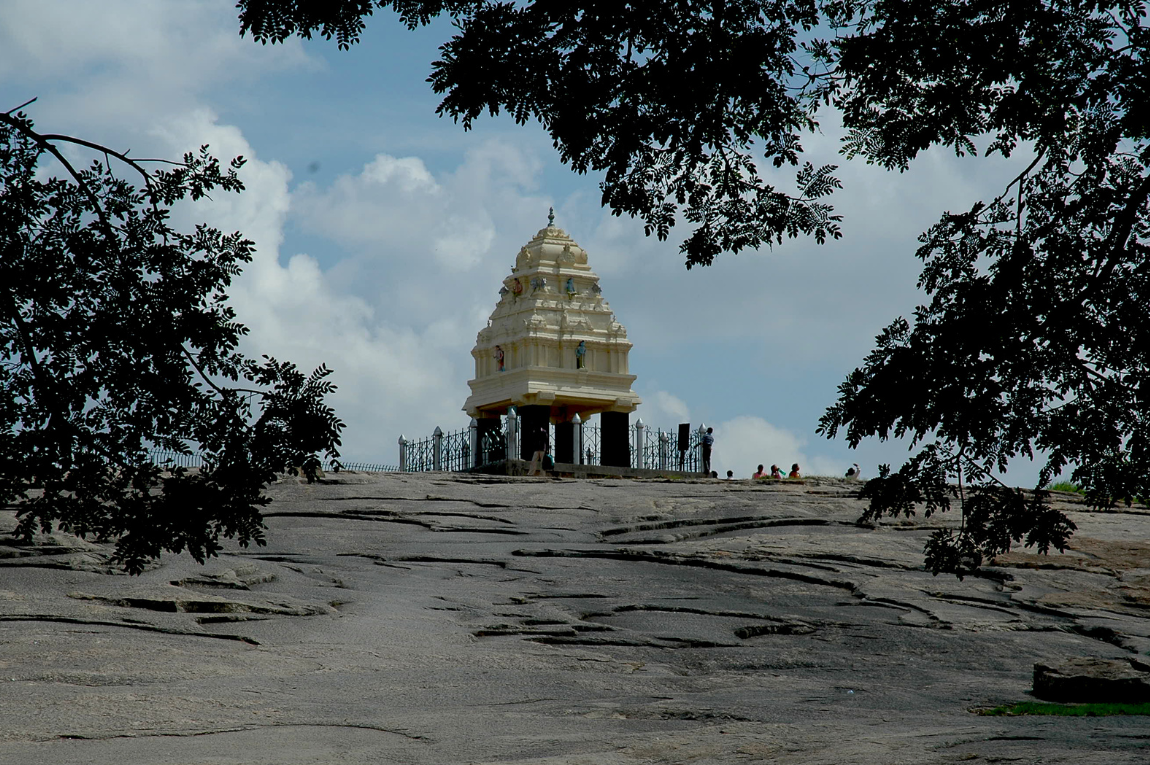
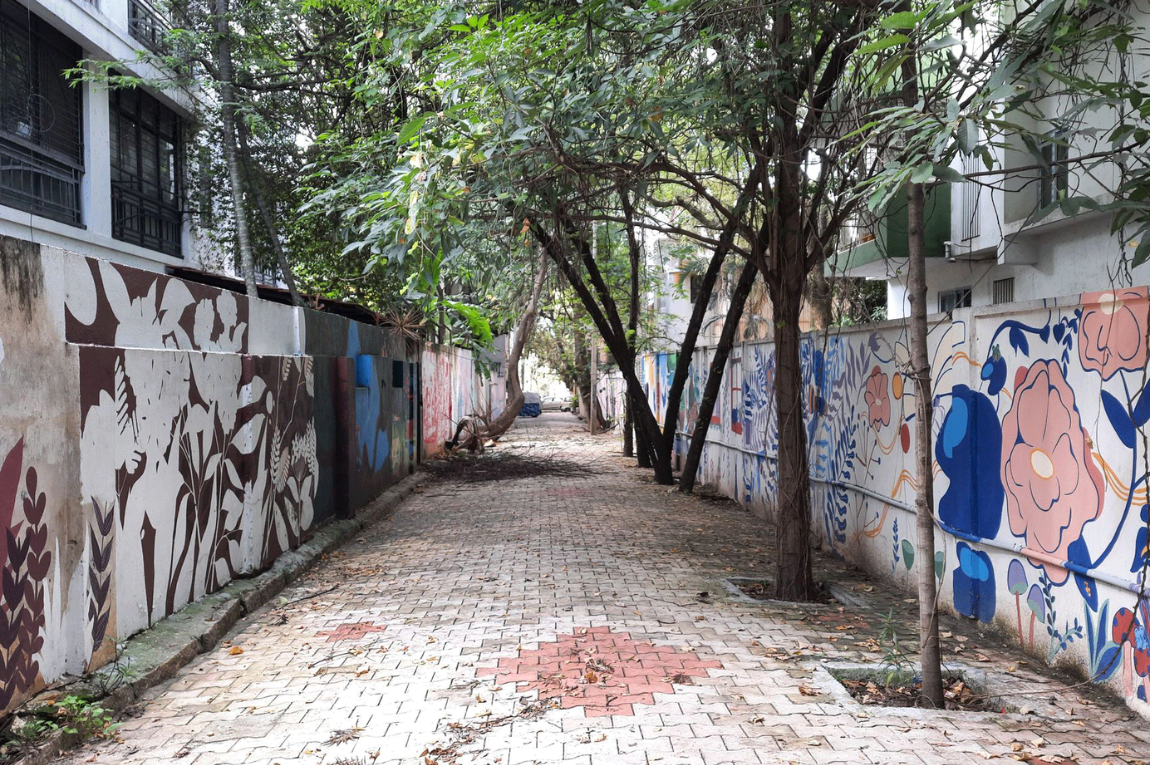
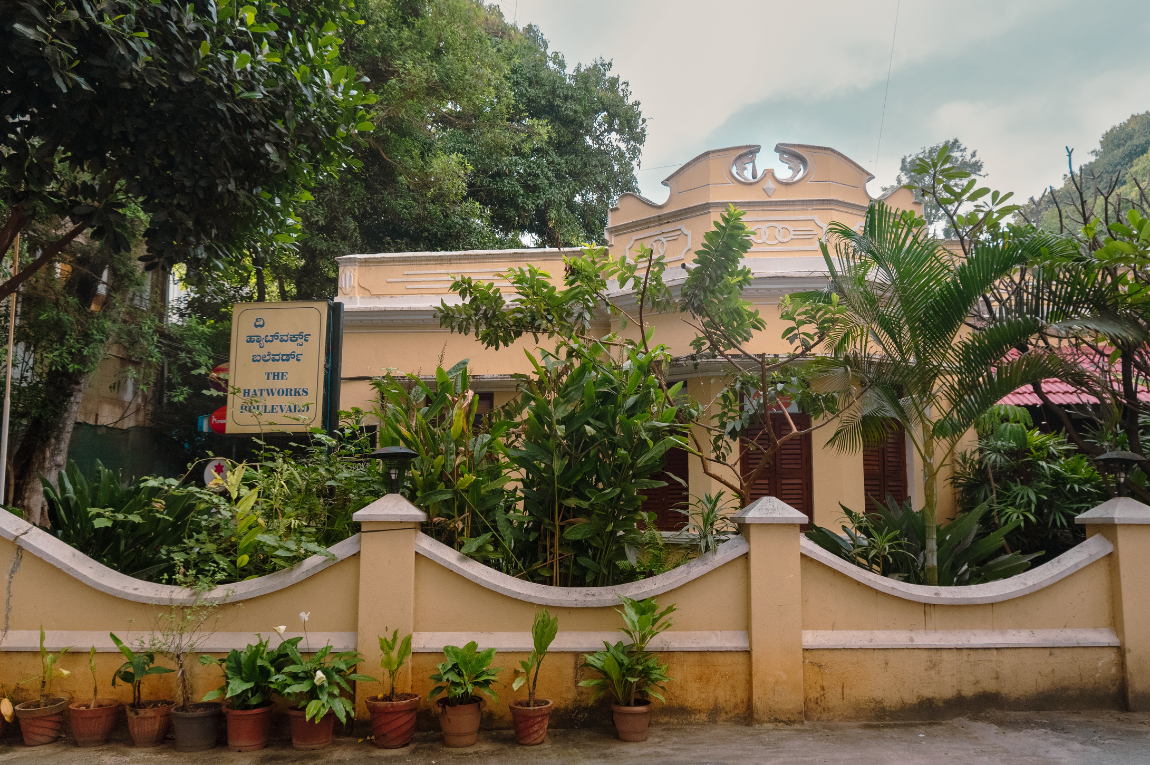
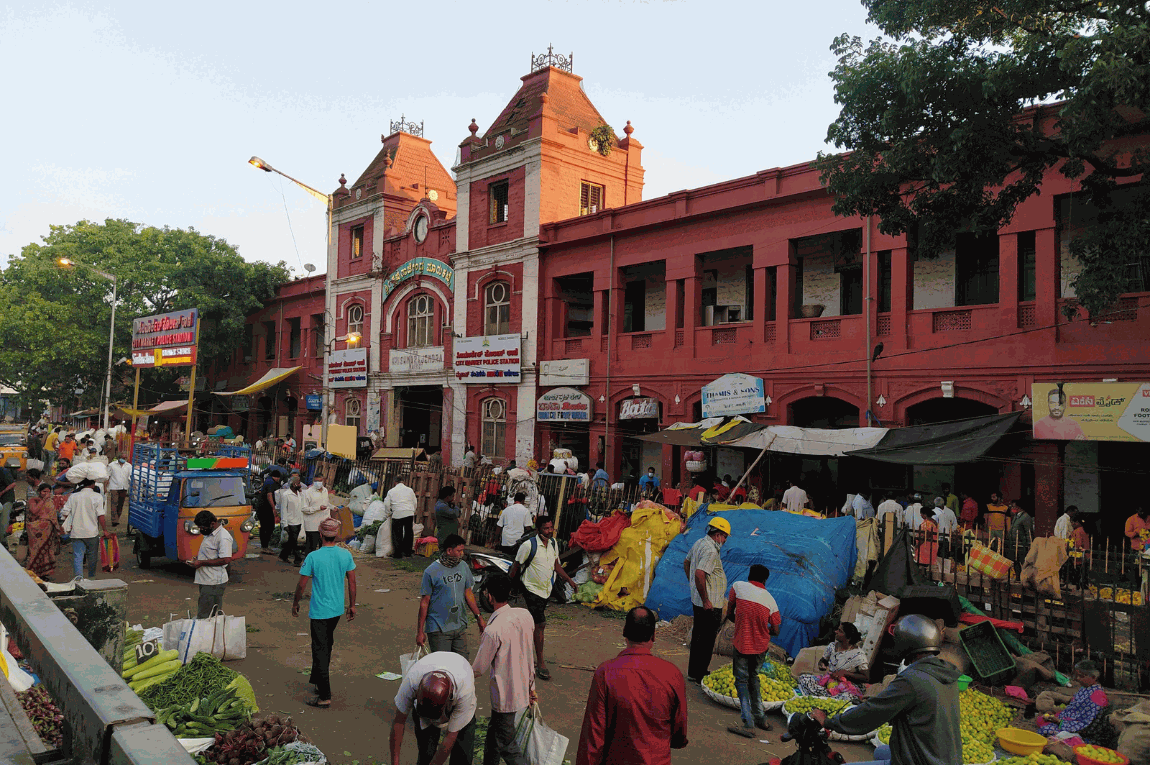
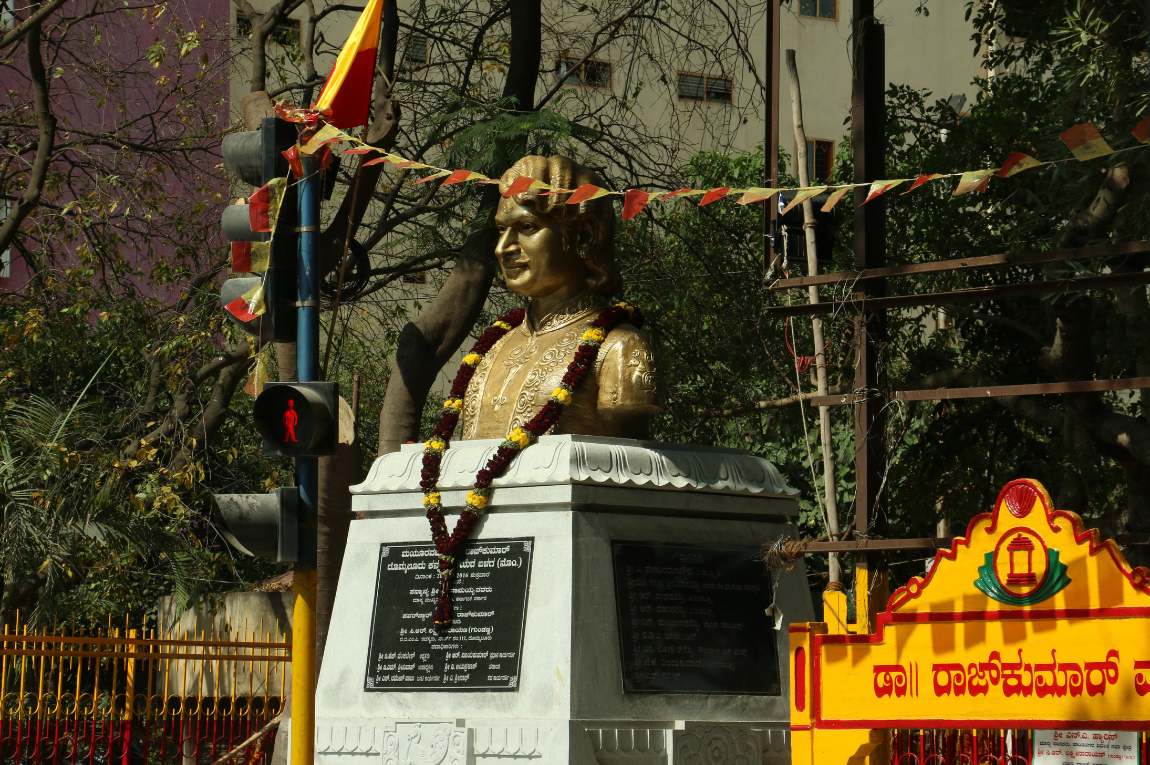
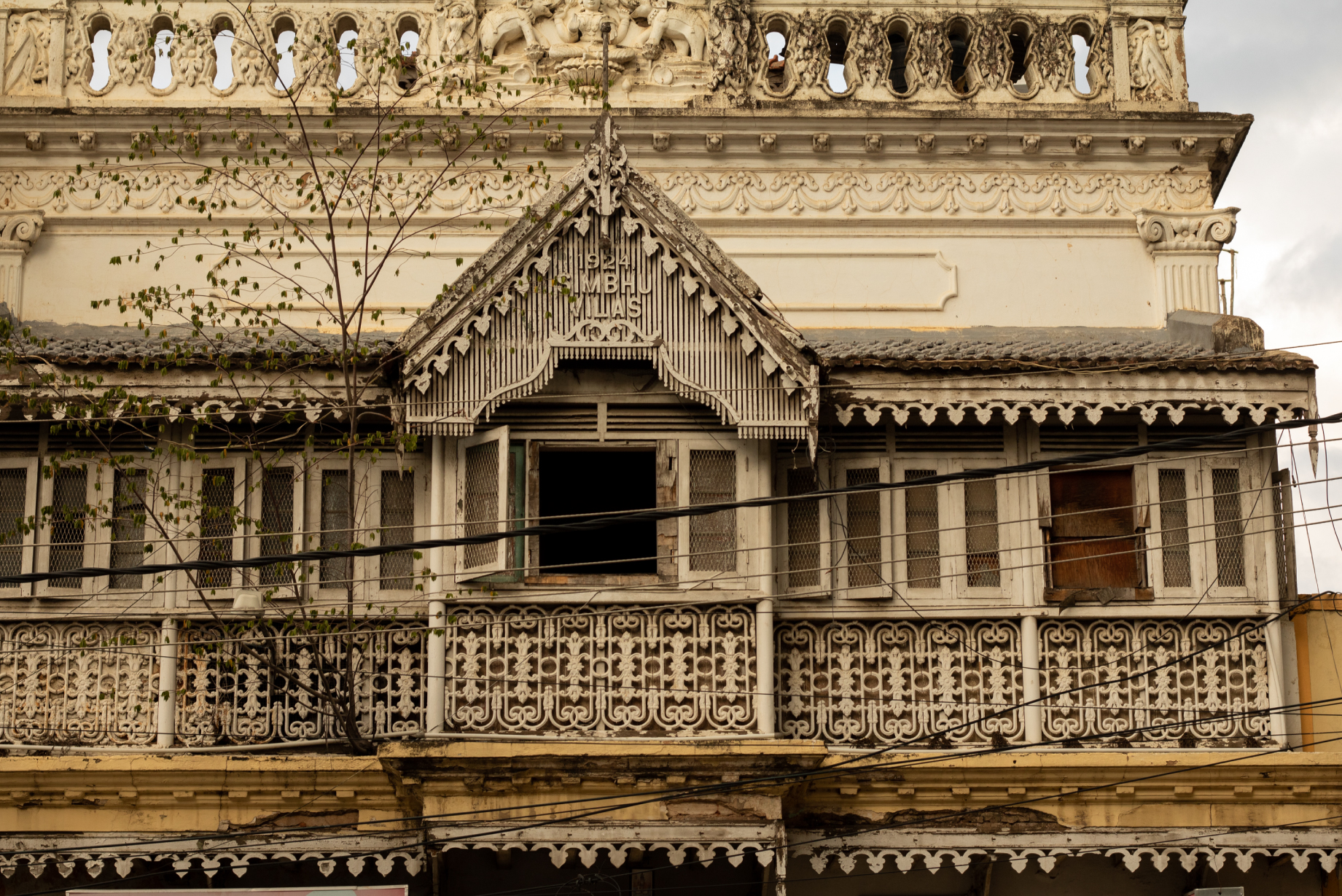







My second home is this🥳🥳
It’s a nostalgic moment! Was visiting this blessed house during summer vacations of late 90’s for art and design class. I appreciate this well captured notes by the author! Thank you to remind me to visit again.
I owned a flat in Lakeshore Manor, adjacent to the Aurobindo Bhavan. My balcony over looked the gardens. Unfortunately, I never got to visit it as I lived for many decades in Oman. The flat was sold, about two decades ago.